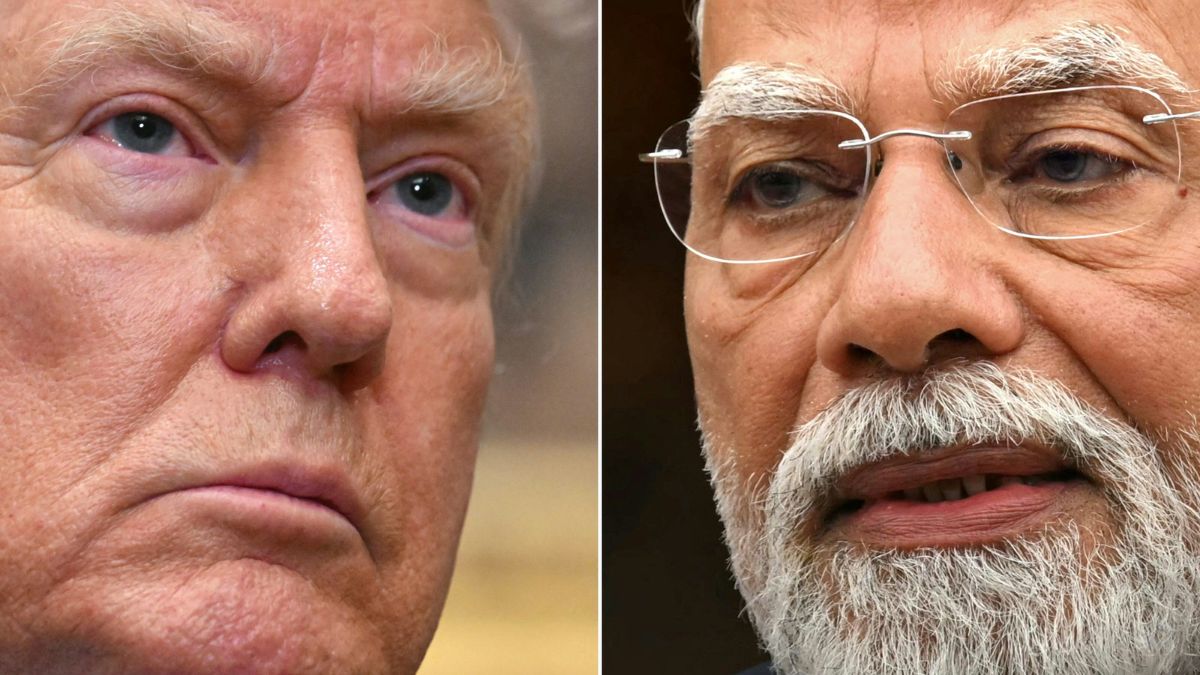

The trade relationship between the United States and India has hit a rough patch, marked by escalating tariffs and hardened stances on key trade issues. Recent actions by U.S. President Donald Trump, specifically the imposition of a 50% tariff on Indian goods, have ignited a fierce standoff, with India vowing to protect its farmers and national interests.
Trump's Tariffs: Aimed at India's Economy
On Wednesday, August 6, 2025, President Trump signed an executive order, adding a 25% tariff on Indian goods on top of an existing 25% duty, bringing the total to 50%. This decision, which took many experts by surprise, was a consequence of India's continued purchase of Russian oil, a move that Washington views as undermining its efforts to isolate Moscow and stabilize global energy markets. Trump has expressed his frustration, stating that India's actions disregard the conflict in Ukraine and that the tariffs are a necessary response. The 50% tariff is among the highest that Trump has imposed on any country, rivaling only Brazil's pending tariff rate. These tariffs are scheduled to take effect in three weeks. Exemptions will be granted to goods required for U.S. national security, such as semiconductors, pharmaceuticals, steel, and aluminum.
Modi's Stand: Protecting Indian Farmers
In response to the U.S. tariffs, Indian Prime Minister Narendra Modi has asserted his commitment to protecting the interests of Indian farmers, fishermen, and dairy farmers. Agriculture has been a major sticking point in trade negotiations between the two countries, with the U.S. seeking greater access to India's vast agricultural and dairy market. India has resisted these demands, citing the need to protect its labor-intensive agricultural sector and the cultural and religious sensitivities related to dairy production. Modi has declared that India will not compromise on these interests, even if it means paying a "heavy price".
Impact and Reactions
The imposition of tariffs has triggered strong reactions from both sides. India's Ministry of External Affairs has condemned the move as "unfair, unjustified, and unreasonable," while Indian exporters have expressed concerns about the potential impact on their businesses. The Federation of Indian Export Organizations (FIEO) warned that the tariffs could severely affect Indian exports, placing them at a competitive disadvantage. Some experts estimate that the tariffs could impact 4.8% of India's total exports, affecting goods worth $40 billion. Sectors like gems and jewelry, textiles, leather, and chemicals are expected to be particularly vulnerable.
Conversely, the U.S. has defended its actions as a means of addressing what it sees as unfair trade practices and ensuring reciprocal treatment. The U.S. Trade Representative has repeatedly raised concerns about India's high tariffs and restrictions on agricultural imports. The Trump administration has emphasized its "America First" policy and its commitment to increasing market access for U.S. products.
Stumbling Blocks and Future Trajectory
Several factors have contributed to the current trade tensions between the U.S. and India. India's continued purchase of Russian oil has been a major irritant for the U.S., which views it as a violation of sanctions and an impediment to its foreign policy goals. Agriculture has also been a persistent obstacle, with disagreements over market access, tariffs, and non-tariff barriers. Moreover, the U.S. has expressed concerns about India's intellectual property rights regime, investment climate, and regulatory policies.
Looking ahead, the future of U.S.-India trade relations remains uncertain. Some experts believe that the tariffs could lead to a wider trade war, with retaliatory measures from both sides. Others suggest that the two countries may eventually find a way to negotiate a mutually acceptable trade agreement. In the meantime, India is exploring alternative markets and strengthening trade ties with other countries, such as the United Kingdom and the European Union. The situation remains fluid, and the coming weeks will be crucial in determining the long-term direction of U.S.-India trade relations.